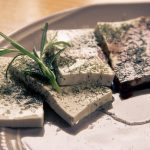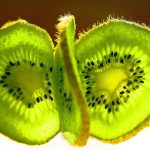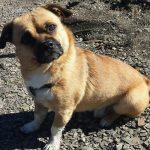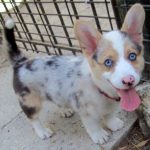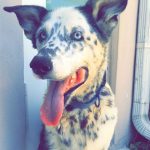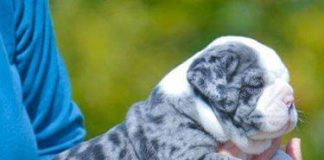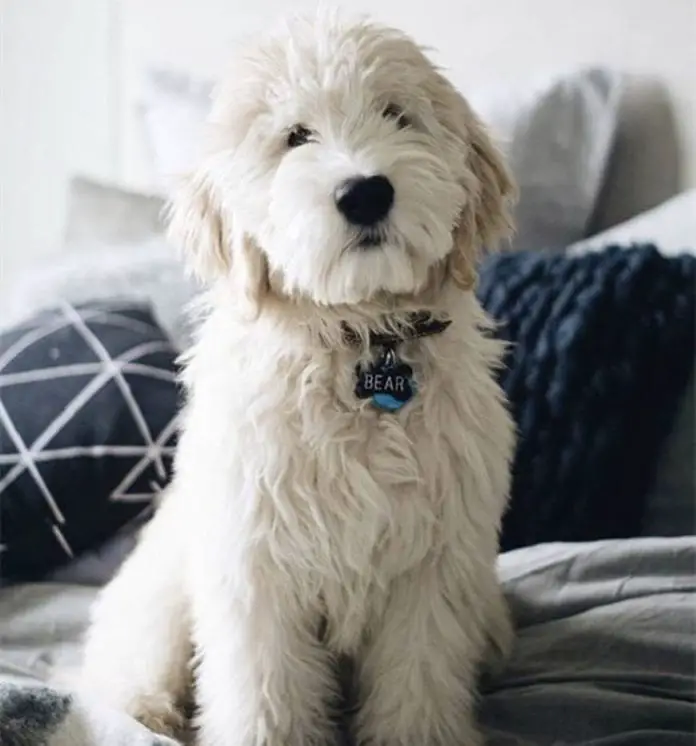
An English Cream Goldendoodle is a result of pairing the Standard Poodle and an English Cream Golden Retriever. Some breeders also use the Australian Labradoodle instead of the Poodle when developing this designer dog breed.
History
The first Goldendoodle was bred by Monica Dickens in 1969. However, the English Cream Goldendoodle was only developed during the 1990s when breeders from North America and Australia showed interest in this crossbreed.
Recognition
Regardless of their color, Goldendoodles can be registered with the Goldendoodle Association of North America (GANA). This organization encourages Goldendoodle breeders and pet owners alike to be responsible for breeding and owning one.
Registering your English Cream Goldendoodles provides a number of benefits, including a pedigree certificate showing up to three generations. You will need to provide the papers of the purebred ancestors from the AKC to be eligible for a pedigree certificate.
Appearance
This Goldendoodle is often regarded as a “Teddy Bear” because of its fluffy look. This is because English Cream Goldendoodles usually have a thicker coat compared to other types of Goldendoodles.
The appearance of the dog will greatly depend on its generation numbers or the percentage of each gene. The most common type is the first generation (F1) which is 50-50 English Cream Golden Retriever and Poodle.
In terms of height, the majority of them grow 20 to 24 inches on average and weigh 50-90 pounds when full-grown. For the miniature types, you can expect them to grow not more than 20 inches and 50 lbs. This is regarded as the true cross of Goldendoodles.
An F1 English Cream Goldendoodle usually boasts a low-shedding coat, because English Golden Retrievers shed less than the other types of Goldens. This makes it a perfect option for pet owners with a history of asthma or allergy to pet hair or dander.
This dog exhibits many of the wonderful traits of Golden Retrievers that are known for their good temperament. At the same time, they have a hypoallergenic coat which is the main reason why they were developed in the first place.
Like the F1 English Cream Golden Retrievers, their coat may look like a pale shade of gold. The cream spots can be seen in some areas of the body such as their chest and ears. They have dark and round eyes that are not slanted unlike the ones of American Goldendoodles.
In terms of the body, these dogs also have a heavier and stockier build compared to other Goldendoodles who look leaner and more lightweight in appearance.
If you happen to have an F1B dog, you will likely have a pooch that has three-fourths of the Poodle gene and only one-fourth of the English Golden Retriever gene. This is a very minimal shedder.
Their coat is silky soft, but it appears wool-like. As pups, they will only need minimal grooming but as their hair continues to grow over time, you need to ensure regular grooming in order to keep it free from mats and tangles.
This type of golden poo is the best one for you if you have a special preference for dogs with a beautiful loose wavy coat. It is also the most hypoallergenic of all, so you will not have a hard time removing pet hair from your furniture and floor.
In addition to first-generation and backcross Goldendoodles, there are the so-called multi-generational Goldendoodles. Their coat is either looser or wavy, depending on the parent. They are also called the F1B generation, however, with English Cream Goldendoodles, you can expect a low shedder as well.
Grooming
Bathing your Goldendoodle should be done every three to four weeks in a warm room and a tub intended for the dog’s size. Their thick coat needs a high-quality shampoo that can penetrate into their skin.
F1 Goldendoodles normally exhibit a curly coat texture. For this coat type, it helps to use a two-in-one formula. A shampoo with conditioner made from natural ingredients is the best product for pooches.
Coat clipping or trimming should be done to make brushing a less complicated task. Trimming must be done periodically in order to avoid tangles or mats. You may do it yourself or hire a professional groomer.
Personality
These designer dogs will be great for families with young children because they are friendly and affectionate. English Golden Retrievers are known for being gentle and non-aggressive.
Training this golden poo will also be easy since it’s the result of the two smartest purebred dogs. A Goldendoodle is one of the most intelligent dogs you can ever find. Because of this, these dogs are often used as guide or service dogs.
Both the Poodle and the Golden Retriever thrives in human interaction. Hence, it is important to expose them to new people and faces early in life. Socialization is very important in dogs regardless of their pedigree.
Health
An English Cream Goldendoodle may live longer than other types of Goldendoodles, because the English Cream Golden Retriever is bred according to AKC standards. It has a lifespan of 12 years, two years longer than an average Golden retriever’s lifespan.
Although there is little evidence that English Cream Golden Retrievers are healthier, one study suggests that they have a lower cancer rate compared to their American counterparts.
Still, all dogs may obtain conditions that are common to both parent breeds. The following health issues are common among Poodles and Golden Retrievers, so it is possible their offspring may inherit them:
- Hip Dysplasia
- Eye Disease
- Heart Disease
- Degenerative Myelopathy
- PRA
An English Cream Goldendoodle may not inherit some of the health issues common to Poodles alone or to Golden Retrievers alone. This is because they enjoy the benefits of having a hybrid vigor, which provides them good health and vitality.
Exercise Needs
The amount of exercise will depend on the age and size of your Goldendoodle. In most cases, Goldendoodles aged two and below will want more play time and will display intense energy. Pups at this age normally need 30 minutes of playtime three times a day.
Adult Goldendoodles will only need 20 minutes of exercise per day. They will enjoy running freely or playing in a yard. Just make sure your fence is well-secured to avoid your buddy from escaping.
The best forms of exercise for them are walking and running. When taking your pet to a dog park or when walking outside, always use a leash. Putting a dog on a leash keeps him safe and secure especially if he is new to the environment.
Feeding
An English Cream Goldendoodle should be fed according to their age, size, and lifestyle. However, because Goldendoodles are generally active, they need dog food rich in protein with a healthy amount of fiber and fat.
Dogs need healthy fats like those coming from canola, flaxseed, and chicken oil. In addition to natural sources of oils, dogs may be supplemented with omega-3 or omega-6 to keep their coat healthy.
While it matters to feed them foods rich in protein, it is well-advised to offer a diet low in carbohydrates. High amounts of carbohydrates in a canine’s diet may contribute to high blood sugar levels.
Feed your English Cream Goldendoodle a premium dog food in the right amount for his age and lifestyle. You may use a dog food calculator to determine the correct amount of your pet’s meal.
Conclusion
The English Cream Goldendoodle gets the intelligence and friendliness of the English Retriever and the low-shedding coat of the Standard Poodle. This hypoallergenic dog can also be used as a guide dog because it can be easily trained and it is one of the most intelligent crossbreeds you can ever find.







